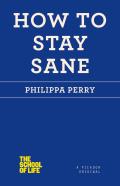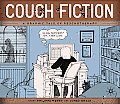
I want to share my own story of how continual learning has helped me stay sane.
I left school at 15 and it took me a few years to come around to and enjoy learning. In my early 20s I had a repetitive administrative job. I knew that I felt understimulated. Boredom drove me to a college-of-further-education recruitment evening. I signed up for psychology and English A-levels and made new friends at these classes. I remember going round to a friend's house for the first time and being excited by her enthusiasm. She said, "I'm not bored anymore; I find myself thinking about the different motivations of characters in Twelfth Night." This is what learning does. It gives us more things to think about so we have less time to get bored, depressed, and understimulated. It builds on our existing knowledge and expands it. It leads us to make more connections by linking together more neural pathways. It also connects our brains to other people's brains.
The next year I studied art and history. These became subjects that I have continued to build on with further reading and, in the case of art and psychology, further courses and a degree. Nothing but good has come from my taking a class. One year I took two evening classes, one in film appreciation and the other in creative writing. In the former I learned that I disliked listening to people talking about film plots, while in the latter I did much better. In that class I met my husband. Learning new subjects not only builds new connections in our brains but in our lives as well.
If we don't exercise our bodies, we don't just stay at the same level of fitness; we become less and less fit. The same goes for our minds. We need continual new learning and positive stimulation to stop our minds from atrophying. Here is an exercise I use to help me achieve this.
The Comfort-Zone Exercise
Get a large piece of plain paper and draw a circle in the middle. Inside the circle write examples of activities that you feel completely comfortable doing. Around the edge of the circle write down examples of activities that you can do but that you have to push yourself a little bit to do — those activities that may make you nervous in some way but not so much as to stop you from doing them. Draw a larger circle around this circle of activities. In the next band write activities that you would like to do but find difficult to get up the courage to do. Draw another circle around this ring of activities. After that write down those things you are far too scared to try but would like to do. You can create as many circles as you like. Here is an example:

It is useful to consider what we are comfortable with and what we are not, and then to experiment with expanding our area of comfort. We should remember that whatever we try is for ourselves alone. It does not matter what anyone else might think. The idea is to expand our comfort zone in small steps. We go beyond "good stress" into "bad stress" if we attempt too big a leap across zones.
 When I started to push out my inner circle to gradually include the other zones, I felt more confident about all the challenges within that original inner zone. I also found that when I set myself a doable challenge and succeeded, my self-esteem and self-confidence rose in all areas. The greatest leap I made was when I went from not being able to run 100 yards to completing the London Marathon. I am sure this is what gave me the confidence to go on submitting my book, Couch Fiction, after its first round of rejections. It was eventually published in May 2010.
When I started to push out my inner circle to gradually include the other zones, I felt more confident about all the challenges within that original inner zone. I also found that when I set myself a doable challenge and succeeded, my self-esteem and self-confidence rose in all areas. The greatest leap I made was when I went from not being able to run 100 yards to completing the London Marathon. I am sure this is what gave me the confidence to go on submitting my book, Couch Fiction, after its first round of rejections. It was eventually published in May 2010.
I have also noticed that if I do not keep on testing my limits, my comfort zone shrinks back. Challenges that had seemed comfortable one year took courage to achieve the next. I do not want to get into that position again, so, onwards and outwards.